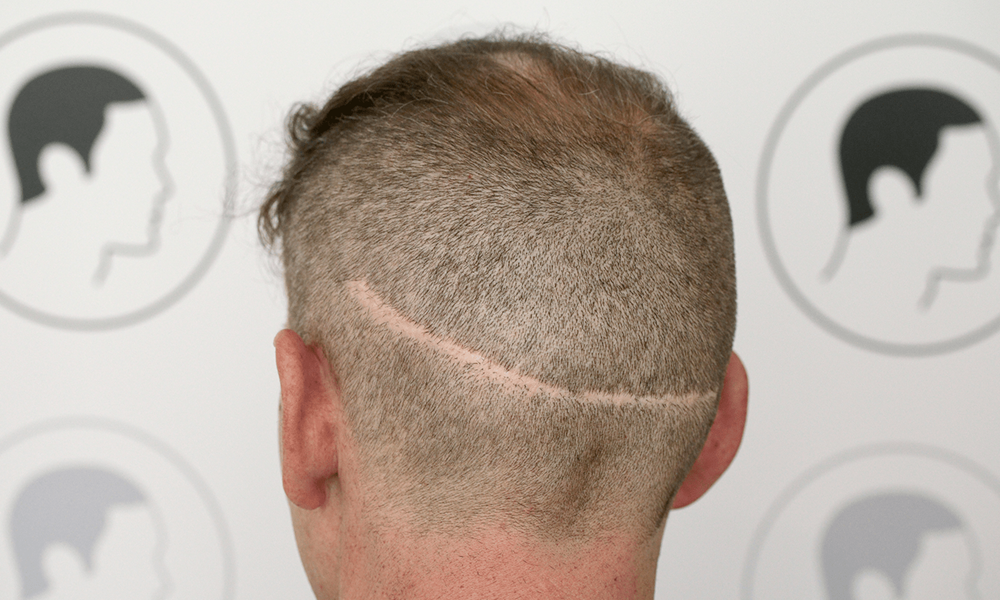If you’re considering a hair transplant, you’ve probably asked yourself: “Will it leave a scar?” It’s a fair question—and one that deserves more than a yes-or-no answer. The truth is, yes, hair transplants can leave scars, but thanks to modern techniques and skilled surgeons, they’re often minimal and well-hidden.
Let’s break it down so you know exactly what to expect.
The Science Behind Scarring
Scars form as part of the body’s natural healing process when the skin is injured—whether by a cut, puncture, or surgical procedure. In the context of hair transplants, scarring occurs when hair follicles are harvested from the donor area and implanted into areas experiencing thinning or baldness. The way your skin heals, and the type of procedure used, determines the kind and visibility of the scar.
With FUE (Follicular Unit Extraction), tiny circular incisions are made to extract individual follicles. These micro-wounds heal as small dot-like scars that are usually scattered and barely noticeable. In contrast, FUT (Follicular Unit Transplantation) involves removing a strip of scalp, which results in a linear scar that can be more visible—especially with shorter hairstyles.
Interestingly, recent research suggests that hair follicles themselves may play a role in improving scar tissue. Studies have shown that transplanted follicles can stimulate the regeneration of skin architecture, promote blood vessel growth, and even trigger gene expression similar to healthy skin. This means that beyond restoring hair, transplants may actually help rejuvenate scarred skin while scarring is a natural part of the process, modern techniques and biological insights are making it less of a concern—and sometimes even part of the solution.
FUE vs. FUT: What’s the Difference?
Follicular Unit Extraction
- Uses a micro-punch tool to extract individual follicles.
- Leaves tiny dot-like scars that are usually invisible to the naked eye.
- Ideal for people who prefer short hairstyles.
- Healing is faster, with less discomfort.
Follicular Unit Transplantation
- Involves removing a strip of scalp from the donor area.
- Leaves a linear scar, which can be noticeable with very short hair.
- Often chosen when a large number of grafts are needed.
- May require longer recovery time.
Factors That Influence Scarring
- Genetics: Some people naturally heal with more visible scars.
- Skin tone and texture: Darker or thicker skin may show scars differently.
- Post-op care: Following aftercare instructions is crucial.
- Surgeon’s expertise: Precision matters—choose wisely.
Scar Management & Concealment Options
Worried about visibility? There are ways to reduce or hide scars:
- Scalp Micropigmentation (SMP): Tattoos tiny dots to mimic hair follicles.
- Laser therapy: Helps smooth and lighten scar tissue.
- FUE into FUT scars: Follicles can be transplanted into old scars to camouflage them.
- Trichophytic closure: A technique that allows hair to grow through FUT scars.
Why Your Clinic Choice Matters
A great outcome starts with a great team. Look for:
- Board-certified surgeons with proven experience.
- Clinics that offer both FUE and FUT options.
- Transparent consultations that explain risks and benefits.
- Real patient testimonials and before-after galleries.
Final Thoughts: Confidence Over Concern
Yes, hair transplants can leave scars—but they’re often a small price to pay for the confidence and transformation they bring. With today’s advanced techniques and thoughtful aftercare, scarring is no longer a major barrier. At The Aesthetic Line, we’re committed to helping you make informed, empowered decisions about your hair restoration journey.

